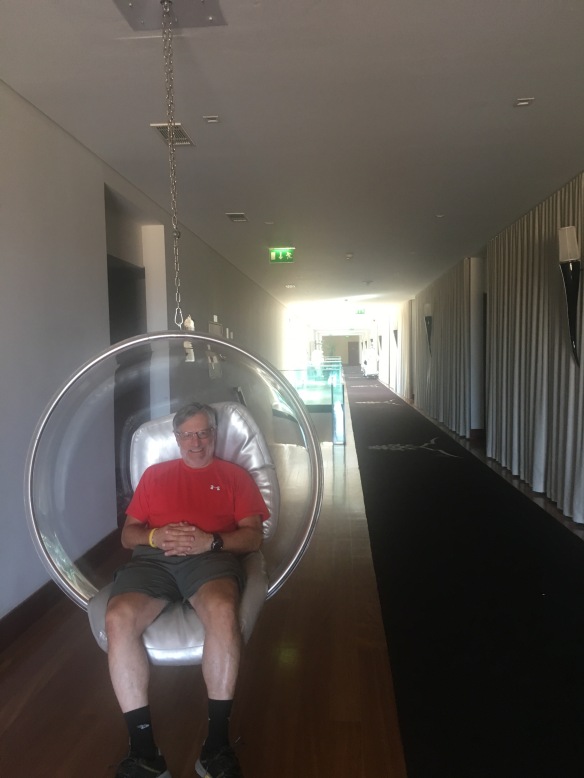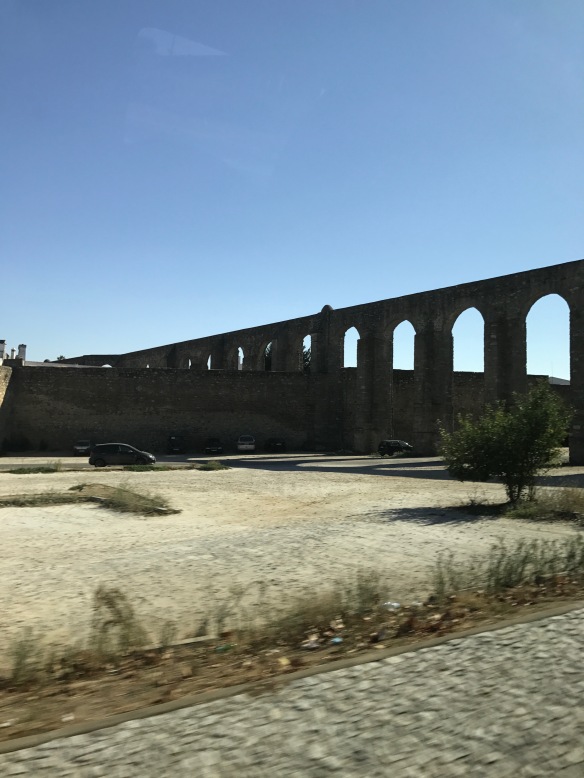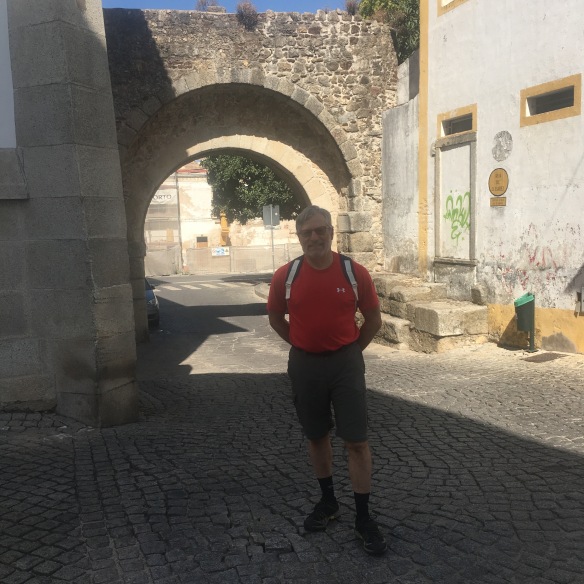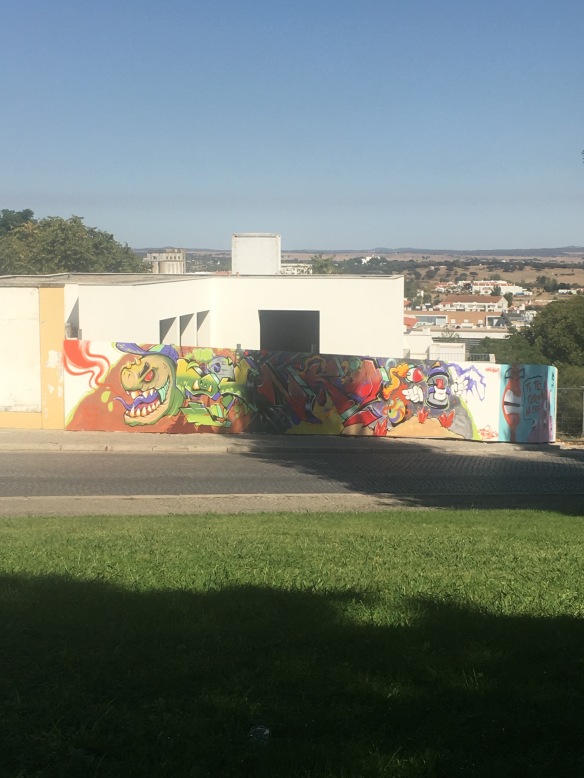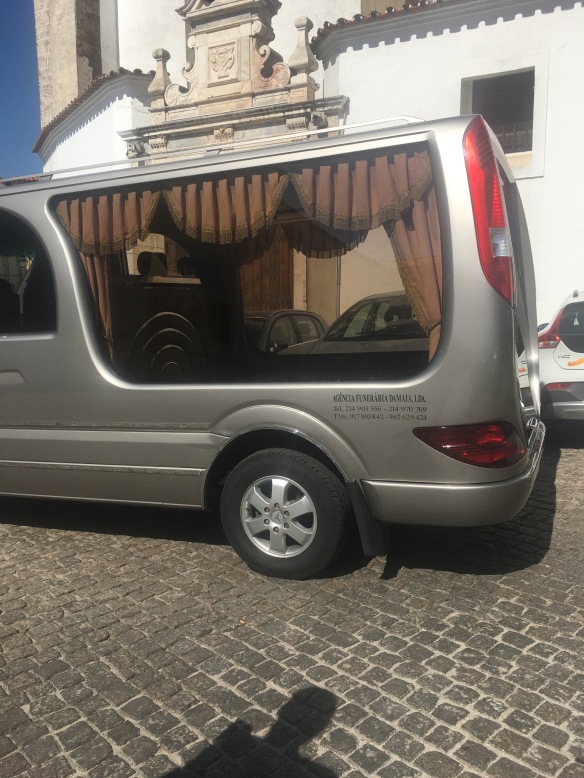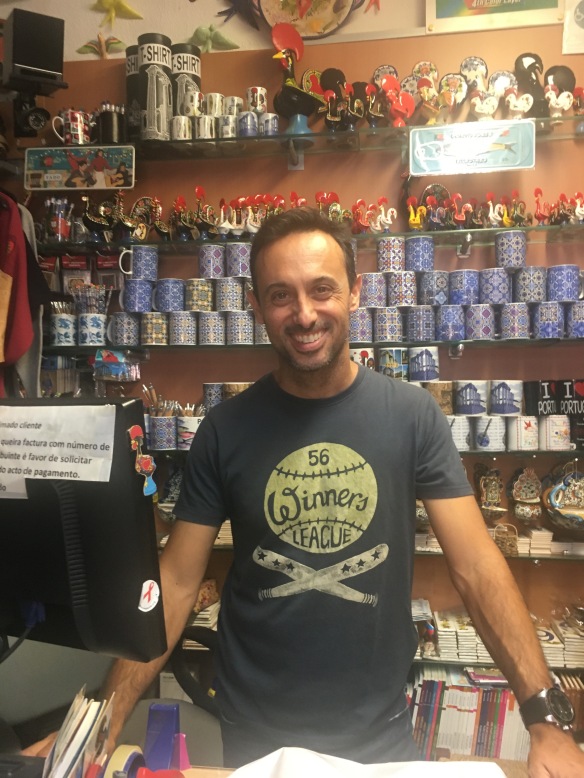These were the days to just be tourists, and Porto is both fascinating and facile for bipeds. Like many places here, the concept of road grading eluded the ancients and thereafter was considered unnecessary and certainly destructive by successive generations. Also, cobbles are forever, unlike much US roadwork. Thus, from our well-placed riverside hotel, we went up.
The first afternoon, rode the funiculare from Riverside to the main town area and down to the shopping neighborhood that features one-of-everything stores of international designers and enough shoppers to completely fill this vehicle free section. 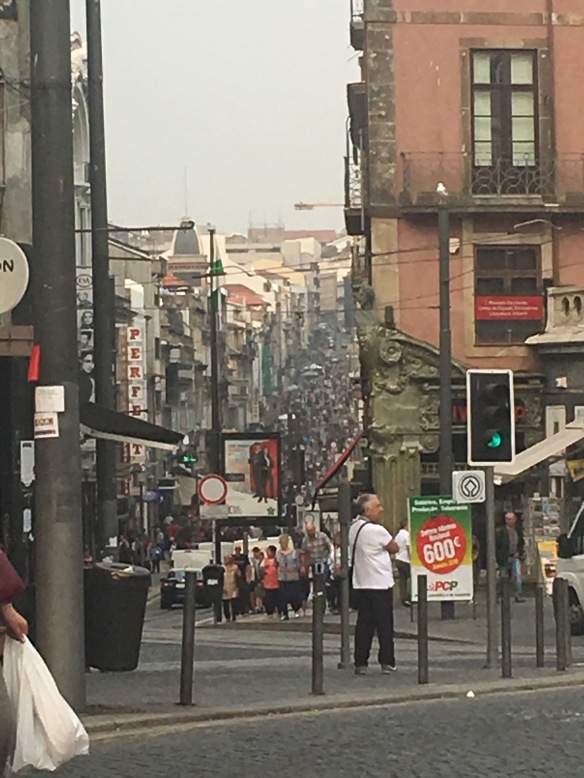 We, however, were most fascinated by the viewing window into the making of the national pastry, pastel de nata. Of course, even keto people have to share just one.
We, however, were most fascinated by the viewing window into the making of the national pastry, pastel de nata. Of course, even keto people have to share just one. 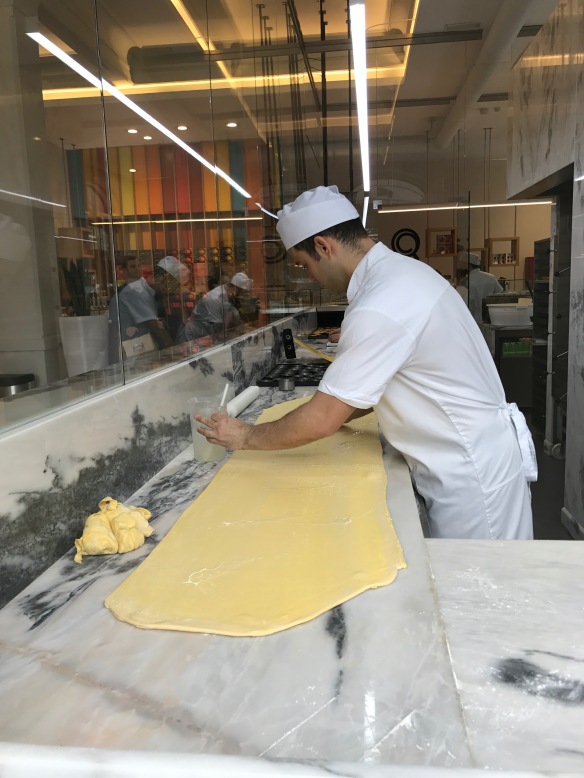
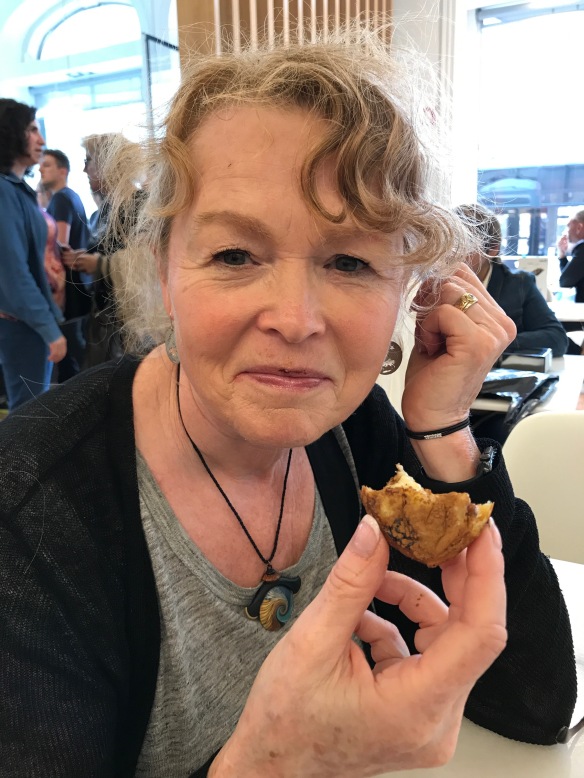
One of our favorite tourist attractions was the Livrario Lello, a longtime intellectual hangout and current stuffed neogothic bookstore. One has to stand in line, pay a small entrance fee and ditch your backpack just for a look. It is said that much of the Harry Potter series were written in this place by JK Rowling, and it even has a certain Hogwarts feel to it.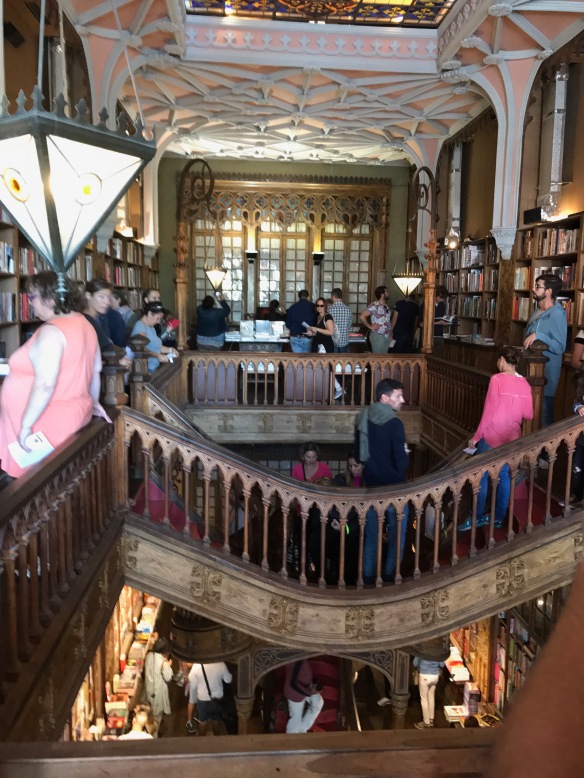
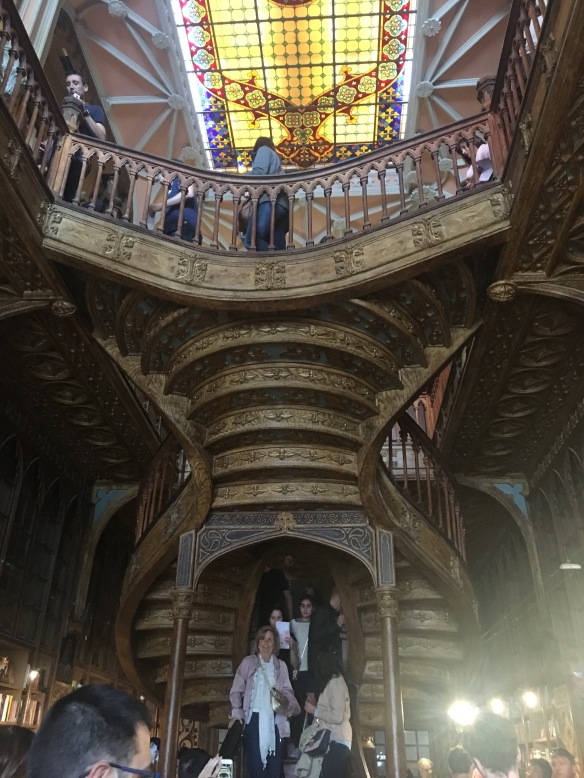
The little shops all had very welcoming clerks. Many were still very enamored of the US, but puzzled and alarmed by the recent turn in our national politics. Rap lives everywhere on phones. This young shopkeeper had a number of favorites, including Bow Wow, Stitches and Eminem. She played us clips, opined on the true character of the artists and gave us a fairly bewildering quick education, all delivered in perfectly delightful English.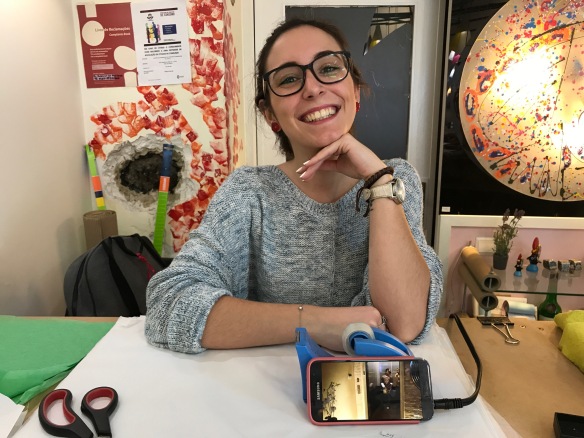
Naturally, we had to do the river bridge tour which produced lots of great photo ops.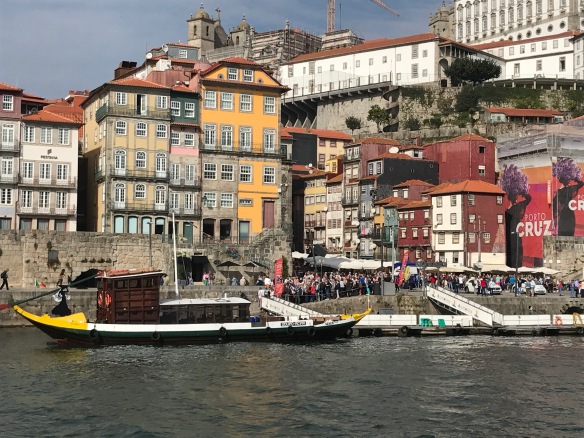 Our last night’s dinner was in a hole-in-the-wall restaurant Cantinho do Avillez owned by a famous Portuguese chef, José Avillez. This chef also has a restaurant in Lisbon, so when we looked up directions with “maps” travel time was something like 6 hours. The dinner, in spite of modest surroundings, was wonderful with yet another bottle of Vinho Verde, but no Porto. The fried green beans and roasted octopus were especially memorable.
Our last night’s dinner was in a hole-in-the-wall restaurant Cantinho do Avillez owned by a famous Portuguese chef, José Avillez. This chef also has a restaurant in Lisbon, so when we looked up directions with “maps” travel time was something like 6 hours. The dinner, in spite of modest surroundings, was wonderful with yet another bottle of Vinho Verde, but no Porto. The fried green beans and roasted octopus were especially memorable.
Then, off to a 3 hour sleep before the long disrupted trip home. We sat 2 hours on the tarmac in Porto, thus missed our Seattle connecting flight in Frankfurt. We were rerouted to San Francisco later that day on a longer flight that probably flew right over our house. Then, the obligate one hour delay in SF…finally home! We have decided to stop deluding ourselves about our Lufthansa allergy.
We will always cherish this adventure for the great organic, earthy feel of the country, the warmth of the people, the seamless melding of old and new, the uniform pride in country that the Portuguese people have, our idyllic rides past castles, through cork forests and olive groves and, of course, the cobblestones.

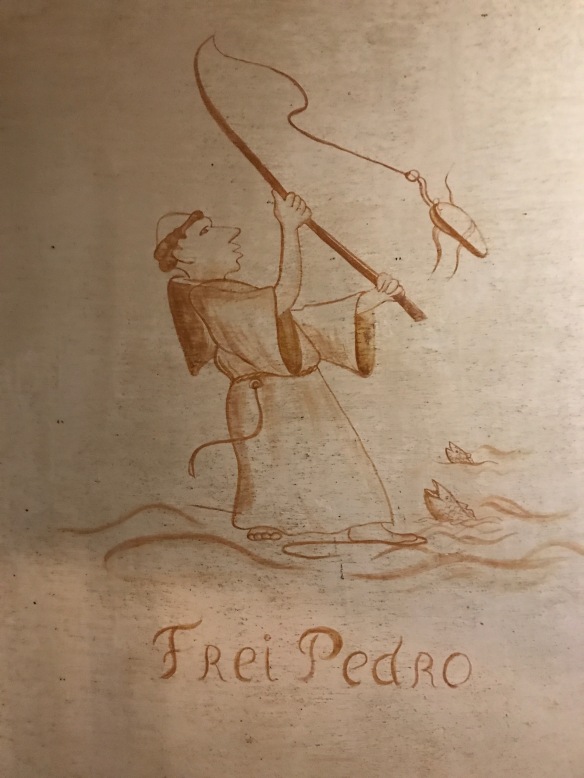 This stop included our first encounter with vinho verde (a young wine from a particular region of Portugal) which we loved (right, Jeremy?). We easily finished the whole bottle.
This stop included our first encounter with vinho verde (a young wine from a particular region of Portugal) which we loved (right, Jeremy?). We easily finished the whole bottle.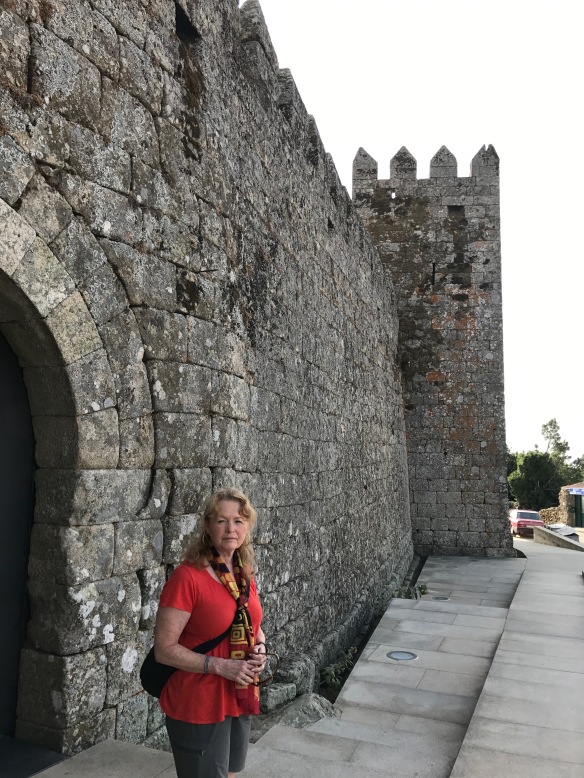
 Eventually, after passing several hikers, we reached the Ervamoira winery. We were greeted by the most solicitous hostess who invited us to enjoy the silence (with an apertif of two kinds of port) after viewing the surprisingly extensive museum describing the origin of the winery.
Eventually, after passing several hikers, we reached the Ervamoira winery. We were greeted by the most solicitous hostess who invited us to enjoy the silence (with an apertif of two kinds of port) after viewing the surprisingly extensive museum describing the origin of the winery. 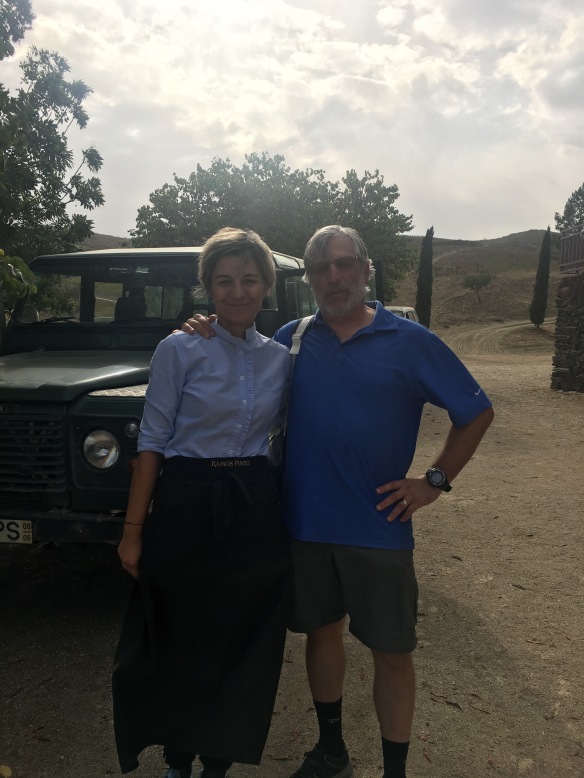 This winery nearly disappeared due to a planned dam which would have flooded the entire property. It was saved by the discovery of cave-like drawings on rock and a very fertile archeological site with artifacts dating back to 10,000-15,000 BCE. It continues to yield new discoveries and research data, all described in the museum.
This winery nearly disappeared due to a planned dam which would have flooded the entire property. It was saved by the discovery of cave-like drawings on rock and a very fertile archeological site with artifacts dating back to 10,000-15,000 BCE. It continues to yield new discoveries and research data, all described in the museum.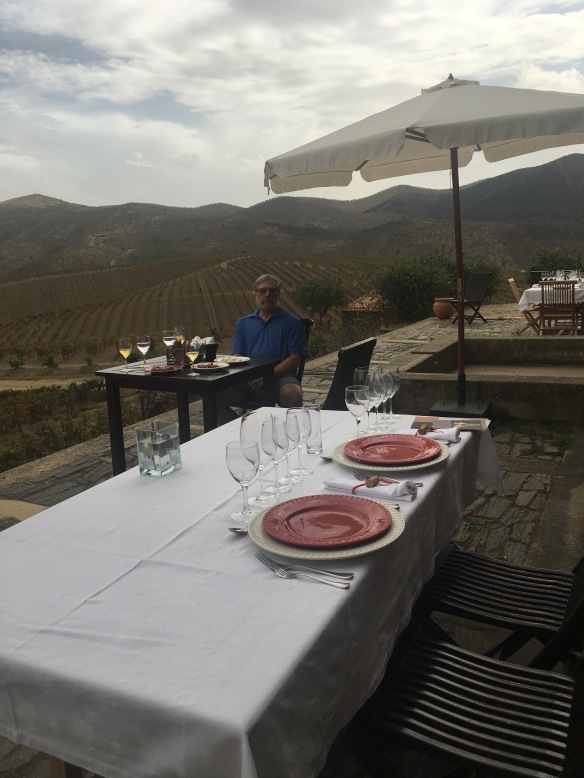
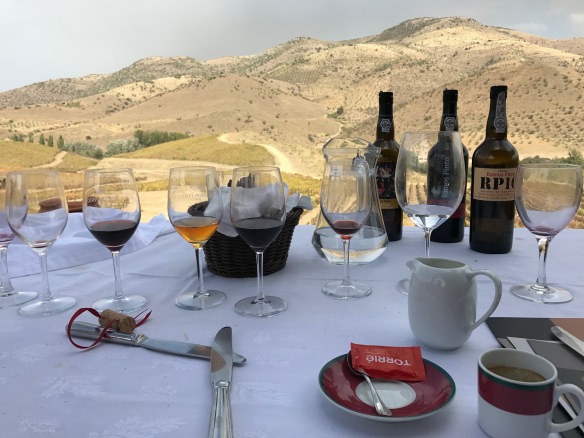 No need to describe the bone rattling trip back to Muxagata. We drank so much wine that we went to our next lodging, the historic walled town of Marialva, and immediately took a nap!
No need to describe the bone rattling trip back to Muxagata. We drank so much wine that we went to our next lodging, the historic walled town of Marialva, and immediately took a nap!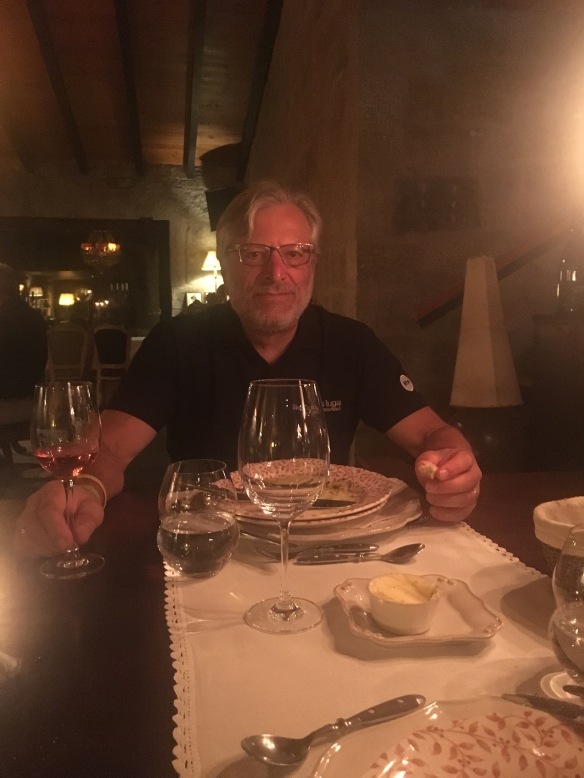
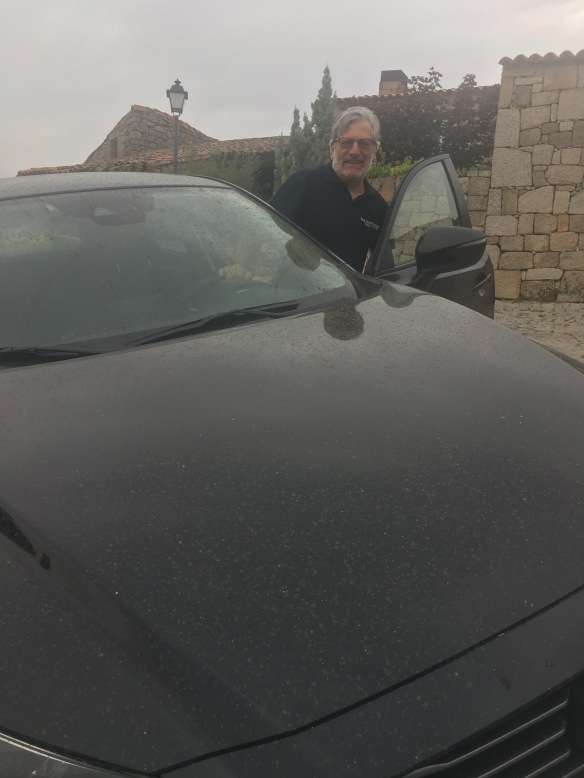
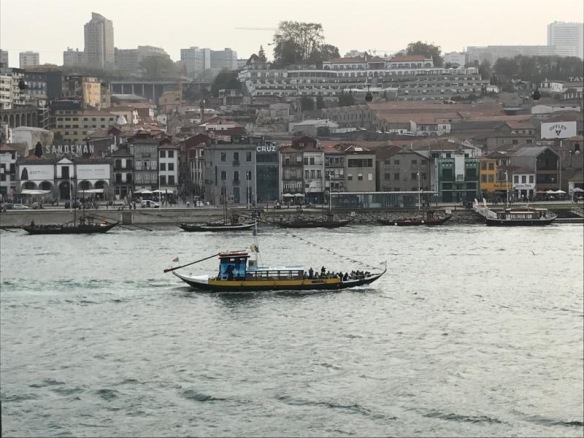
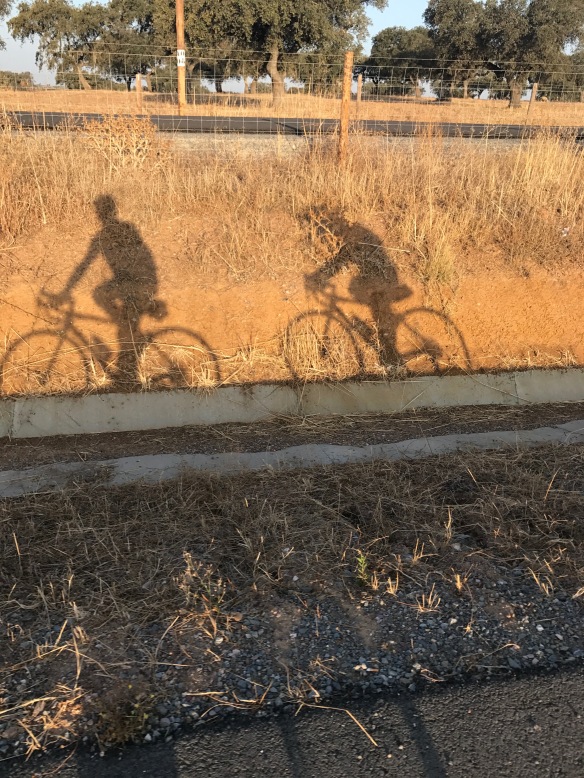 The early roads were civilized “N” roads with little traffic, good grading and wide shoulders, giving way, initially, to ungraded single lane roads with mildly aged pavement, but with endless steep, short climbs that Portuguese riders call by a term which roughly translates “leg breakers”. Further on, however, the pavement worsened steadily, until the only partially smooth section was the 8 inches on either side of the white line. These roads were winding, but infrequently travelled, thus leading to the game of car chicken. In this game, you are completely dependent on your hearing to identify oncoming traffic. When you hear the approach (from behind or ahead) you move temporarily to the side. Luckily, we’ve not seen any of the more silent electric cars here.
The early roads were civilized “N” roads with little traffic, good grading and wide shoulders, giving way, initially, to ungraded single lane roads with mildly aged pavement, but with endless steep, short climbs that Portuguese riders call by a term which roughly translates “leg breakers”. Further on, however, the pavement worsened steadily, until the only partially smooth section was the 8 inches on either side of the white line. These roads were winding, but infrequently travelled, thus leading to the game of car chicken. In this game, you are completely dependent on your hearing to identify oncoming traffic. When you hear the approach (from behind or ahead) you move temporarily to the side. Luckily, we’ve not seen any of the more silent electric cars here. 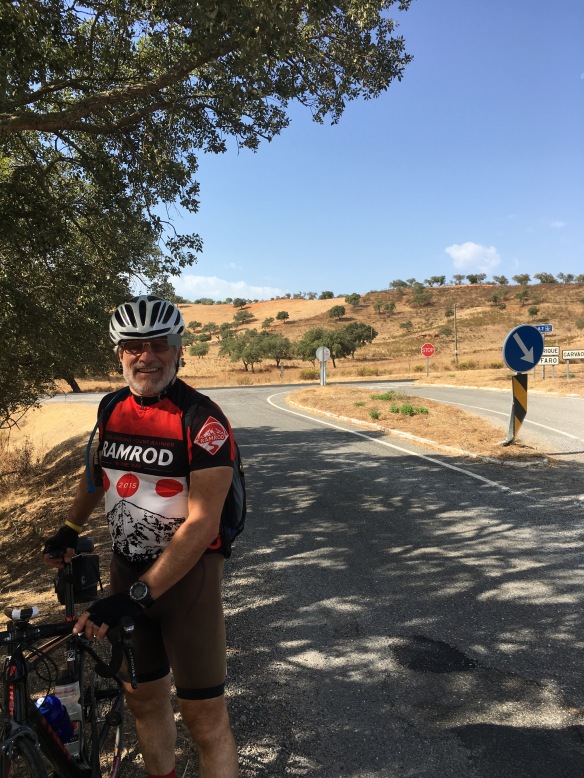
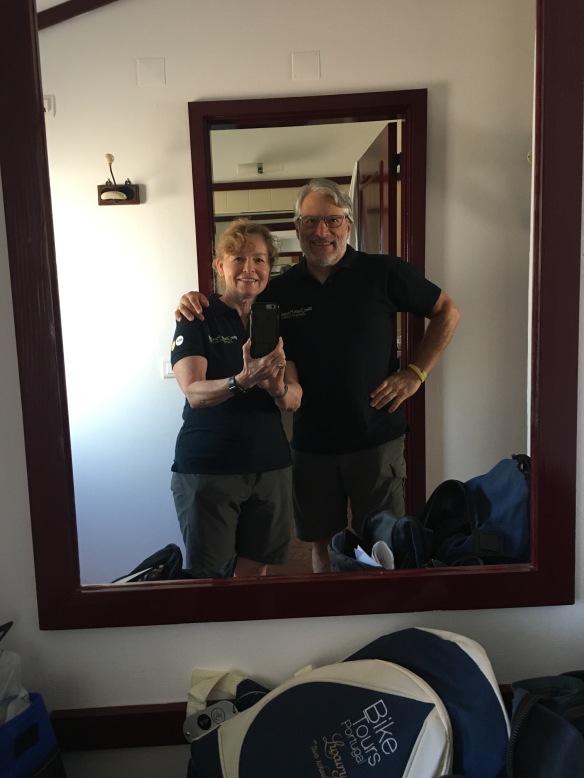
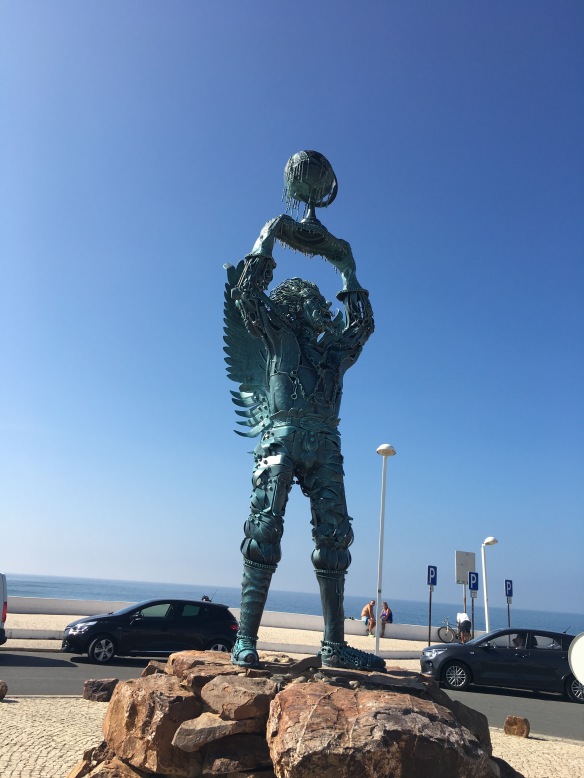
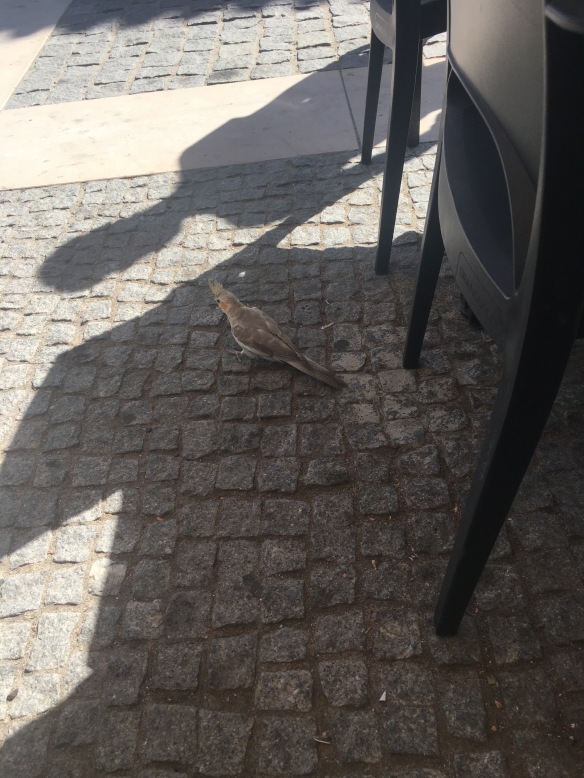
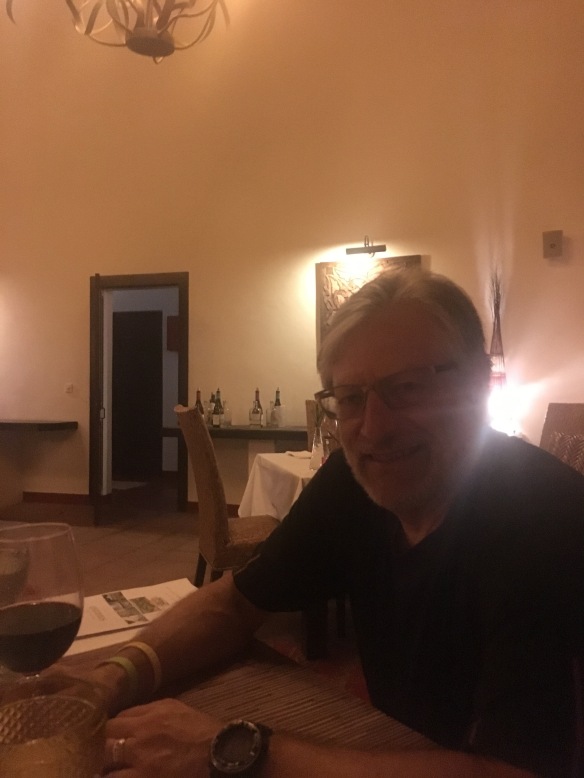
 Our ride out was on gravel at 7:45, just barely after the sun was up. We were anticipating a longish day (58 miles) with a few thousand feet of climbing and hoped to get most of it done by the time it got really hot. Luckily, that mostly worked out and the riding was just terrific with a whole smorgasbord of pavement variations, but almost entirely on backroads with limited traffic.
Our ride out was on gravel at 7:45, just barely after the sun was up. We were anticipating a longish day (58 miles) with a few thousand feet of climbing and hoped to get most of it done by the time it got really hot. Luckily, that mostly worked out and the riding was just terrific with a whole smorgasbord of pavement variations, but almost entirely on backroads with limited traffic.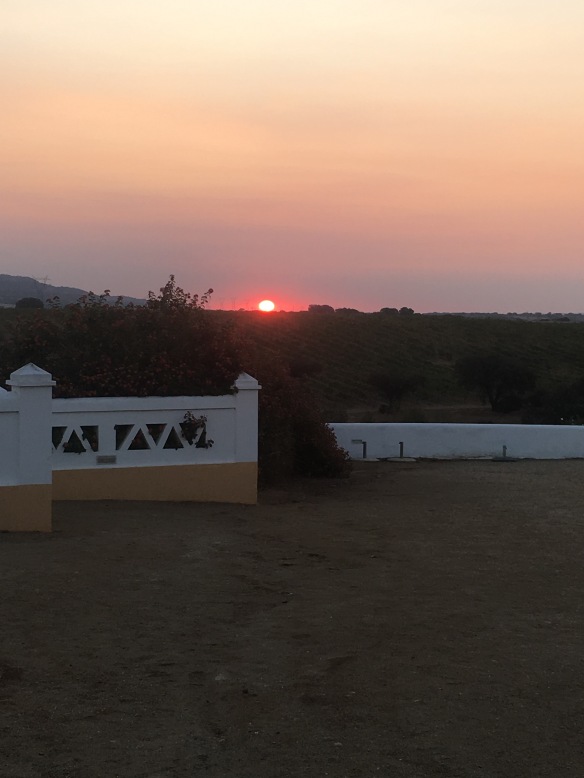
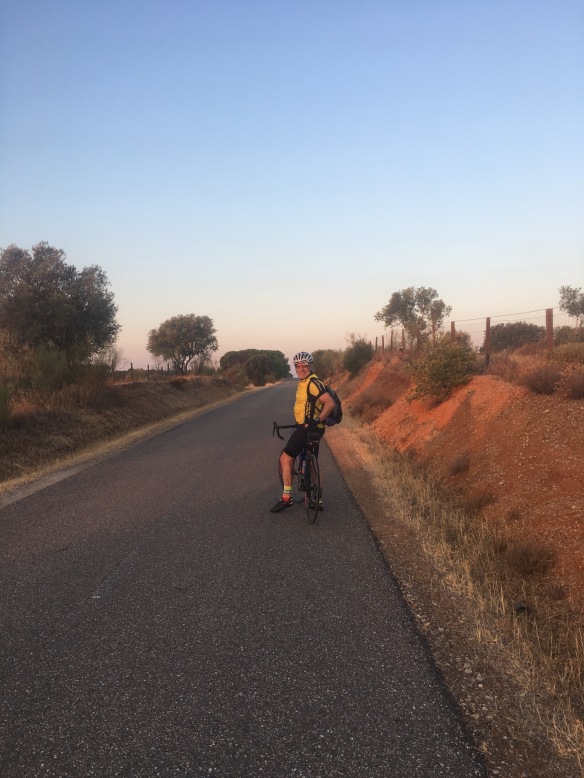 It was a big day for animals, with cows, pigs, sheep,horses and goats all spotted in the same 2 mile stretch. Even the sheep have enough sense to get out of the heat.
It was a big day for animals, with cows, pigs, sheep,horses and goats all spotted in the same 2 mile stretch. Even the sheep have enough sense to get out of the heat.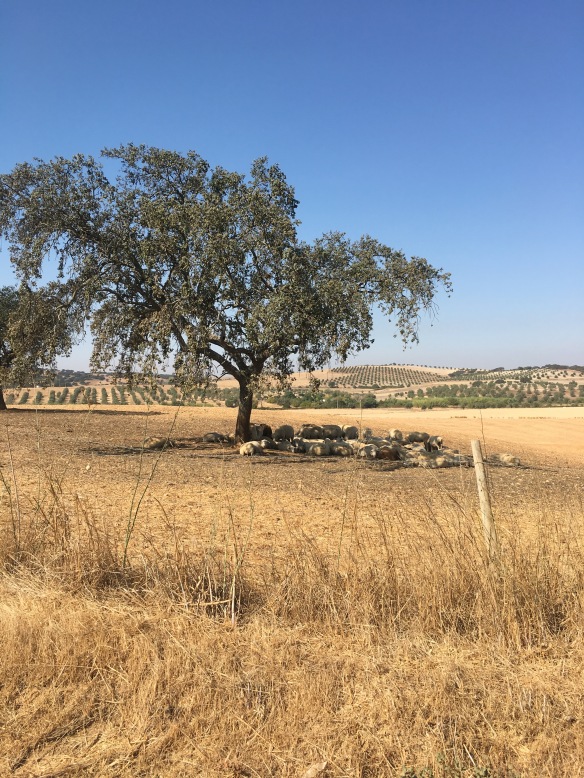 Our lunch was a cheese sandwich made from breakfast leftovers.
Our lunch was a cheese sandwich made from breakfast leftovers.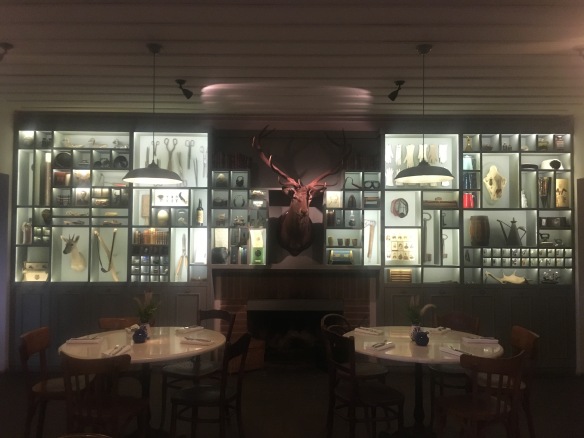 We departed early again, after begging entrance to breakfast at the unimaginable hour of 7am. It was a challenging start with a 1 mile rough gravel driveway followed by an 8% drag up to Monsarraz, a classic hilltop fortification once attacked by an English lord after a broken betrothal to a royal daughter. This is notable because England and Portugal have a long history of a friendly alliance. This would have been a fun place to defend, absent trebouchet or heavy artillery.
We departed early again, after begging entrance to breakfast at the unimaginable hour of 7am. It was a challenging start with a 1 mile rough gravel driveway followed by an 8% drag up to Monsarraz, a classic hilltop fortification once attacked by an English lord after a broken betrothal to a royal daughter. This is notable because England and Portugal have a long history of a friendly alliance. This would have been a fun place to defend, absent trebouchet or heavy artillery.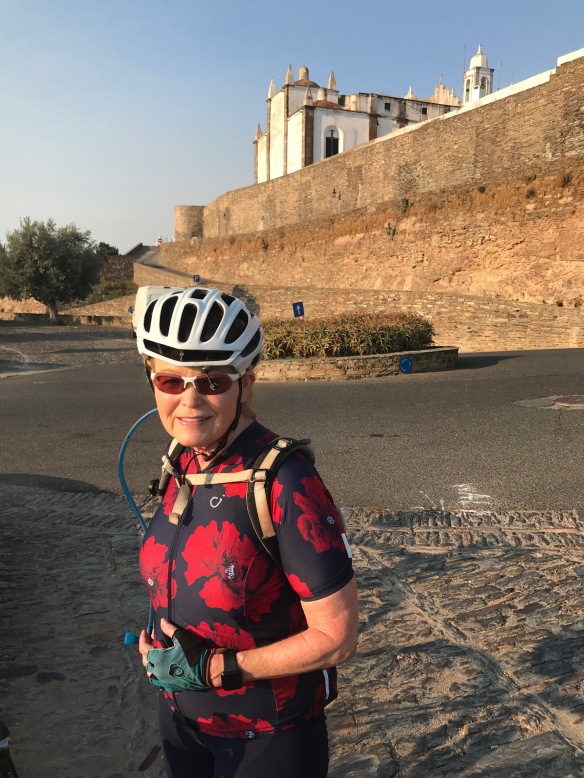
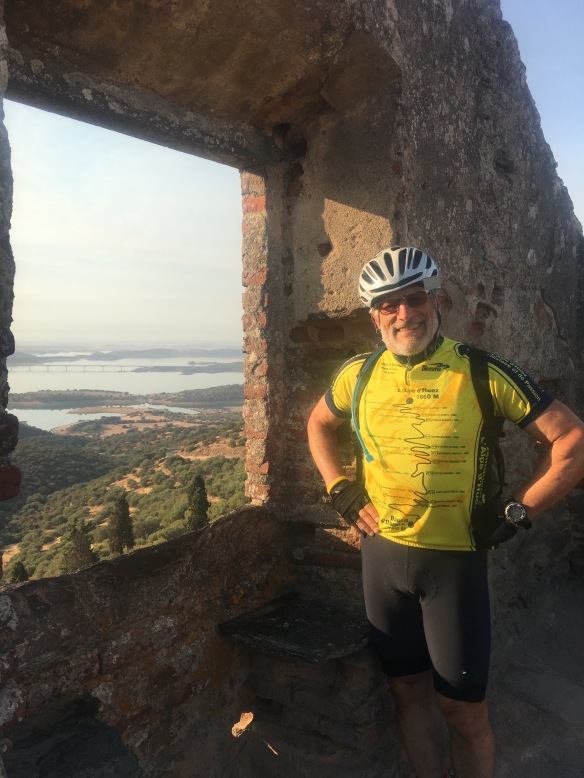 Bullfights now occur in the main gathering area. We know this from guide books and because there were modern beer dispensaries in the ring.
Bullfights now occur in the main gathering area. We know this from guide books and because there were modern beer dispensaries in the ring.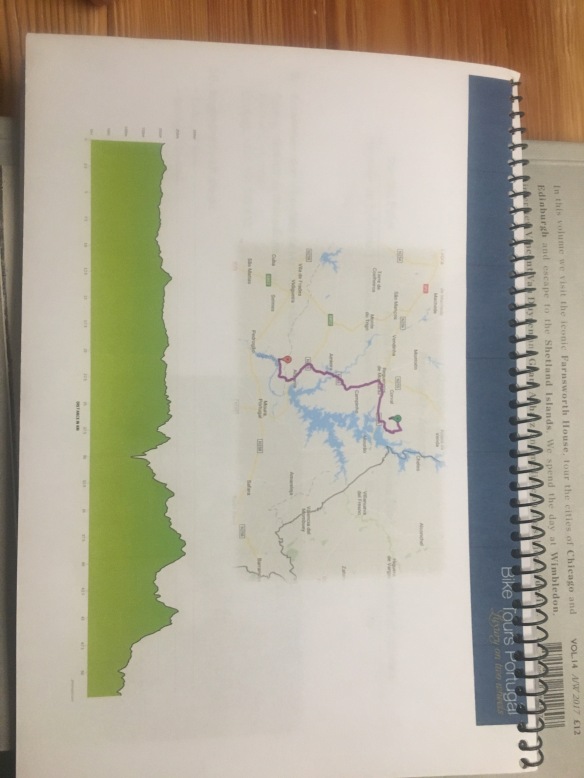
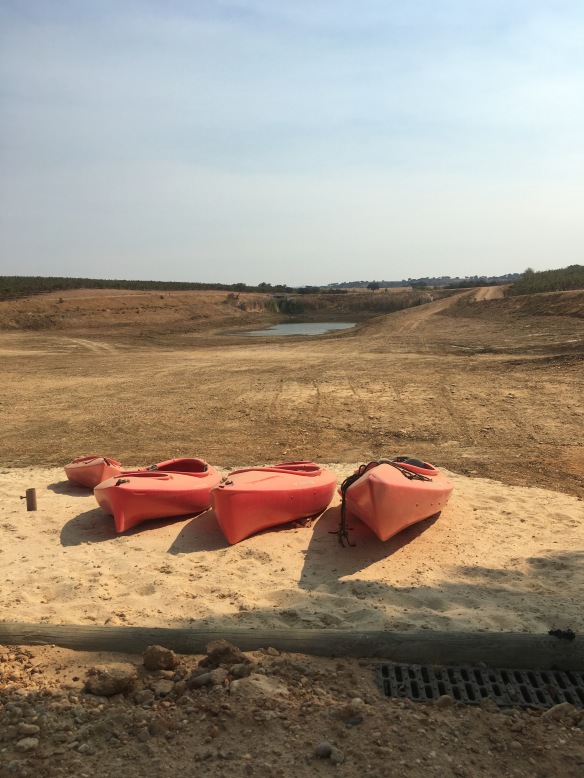 It was a good day for animals. We passed this steer with 3 babies–daddy day care? Steer training?
It was a good day for animals. We passed this steer with 3 babies–daddy day care? Steer training?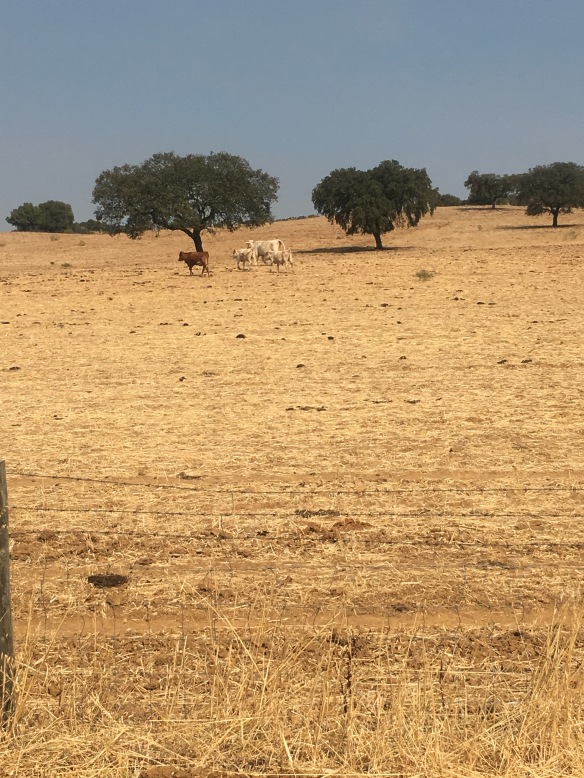 And we have not yet seen the bird who nests here but are keeping our eyes turned upward.
And we have not yet seen the bird who nests here but are keeping our eyes turned upward.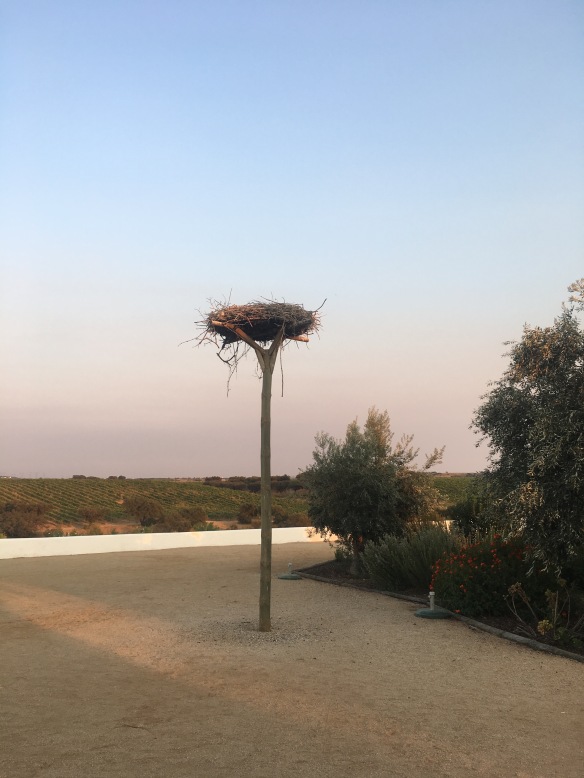 Happily, there is still enough water for
Happily, there is still enough water for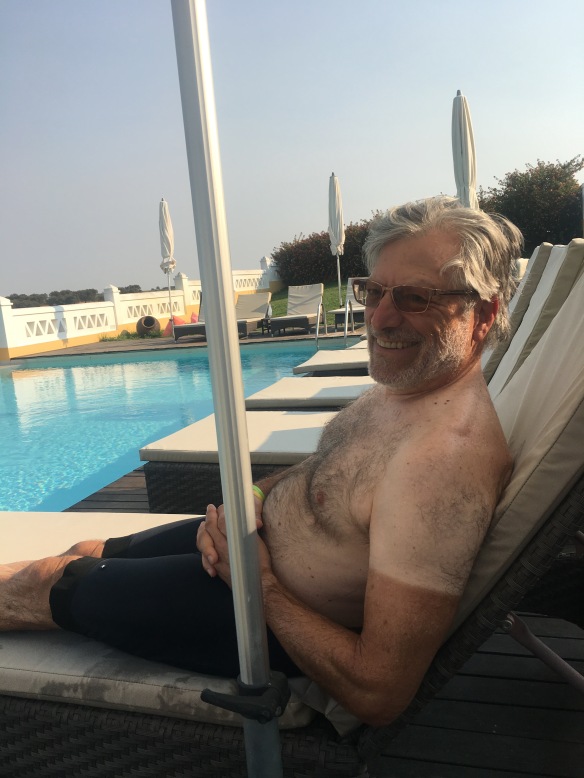
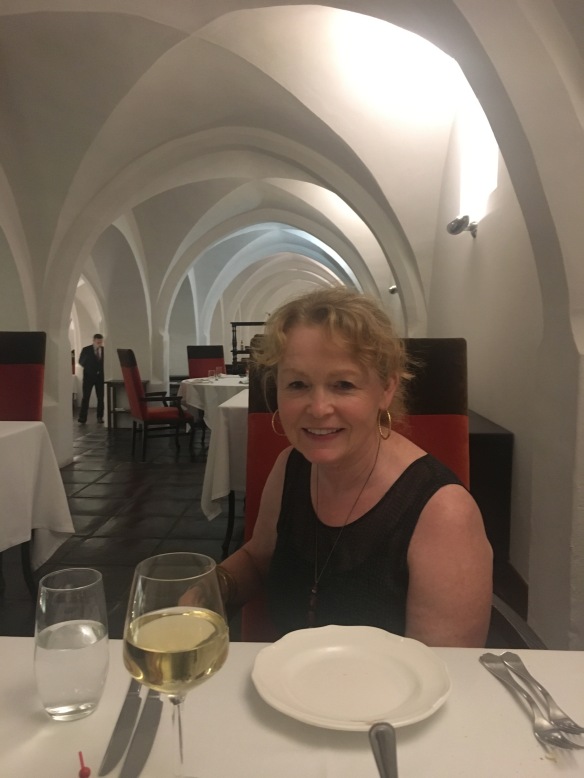
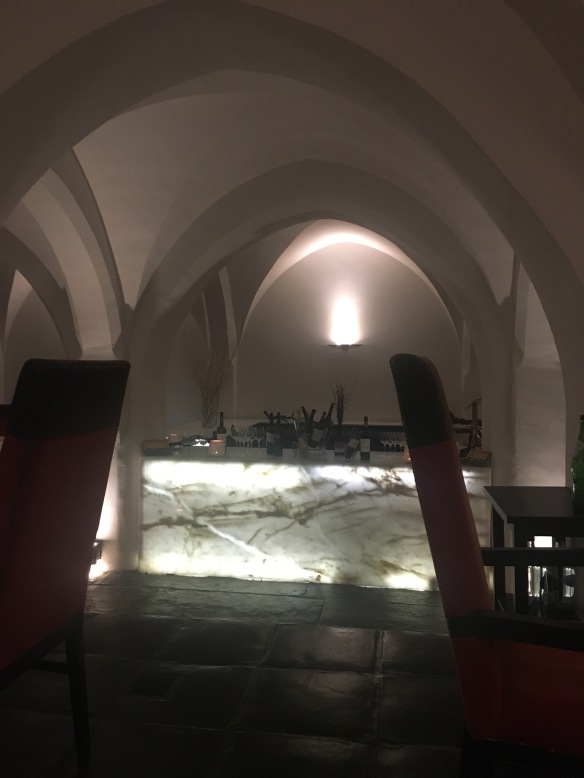 All subsequent pictures of me will be curly since I fried my straightener on the 220 outlet. Just because you CAN plug it in doesn’t mean you SHOULD plug it in. Moss is so happy to be carrying the heavy transformer for nothing now.
All subsequent pictures of me will be curly since I fried my straightener on the 220 outlet. Just because you CAN plug it in doesn’t mean you SHOULD plug it in. Moss is so happy to be carrying the heavy transformer for nothing now.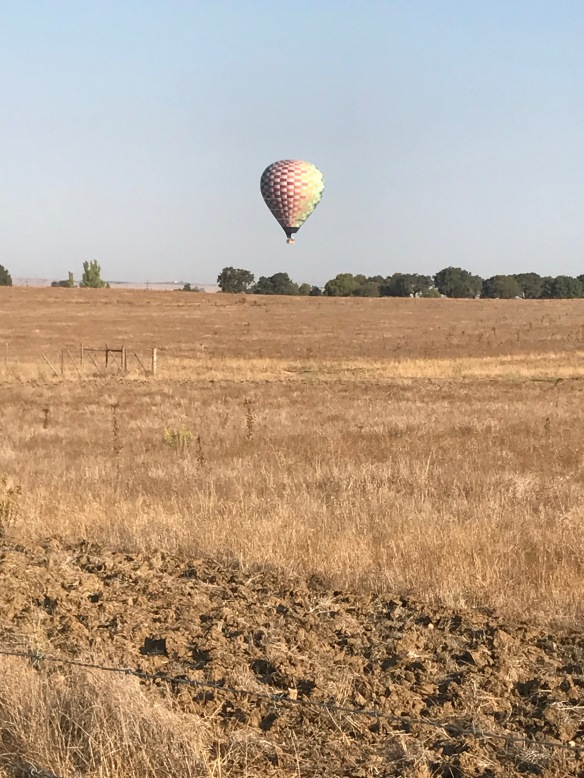 and also came along several of these peculiarly Portuguese installations which usually appear just before a town entrance:
and also came along several of these peculiarly Portuguese installations which usually appear just before a town entrance: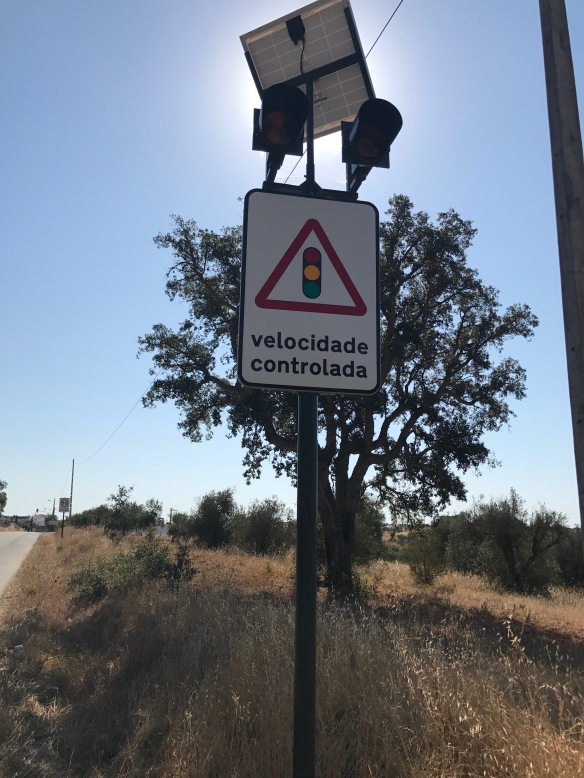 High school Spanish gets you the function, but how it works is unique. These signs appear about 500m before a stoplight which guards no intersection, just out there. There is a speed sensor just at or after the sign. If you are going over the speed limit (the usual), the light turns red in front of you and stays that way for 2 minutes–tough on the law-abiding driver behind you also.
High school Spanish gets you the function, but how it works is unique. These signs appear about 500m before a stoplight which guards no intersection, just out there. There is a speed sensor just at or after the sign. If you are going over the speed limit (the usual), the light turns red in front of you and stays that way for 2 minutes–tough on the law-abiding driver behind you also.
